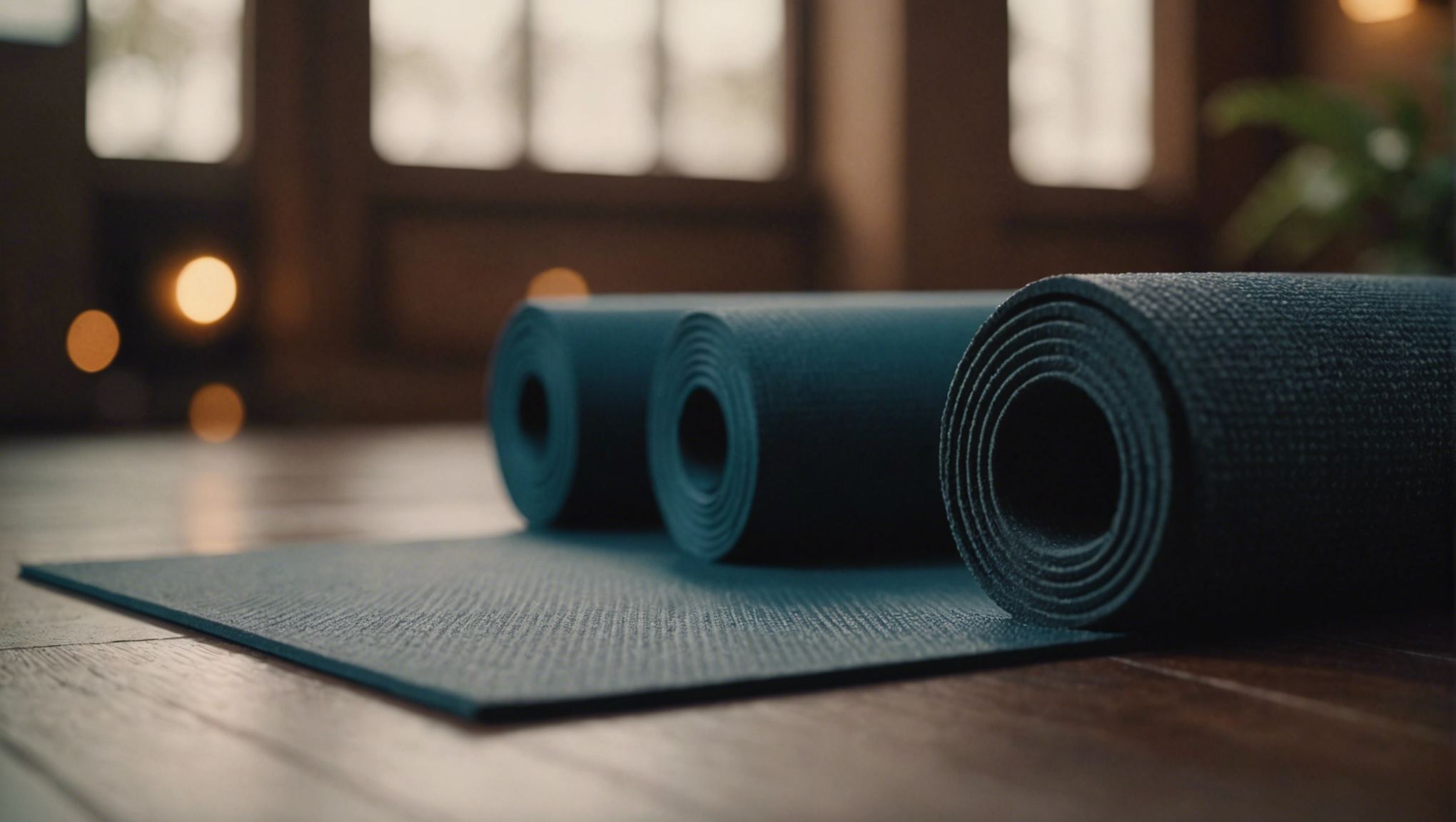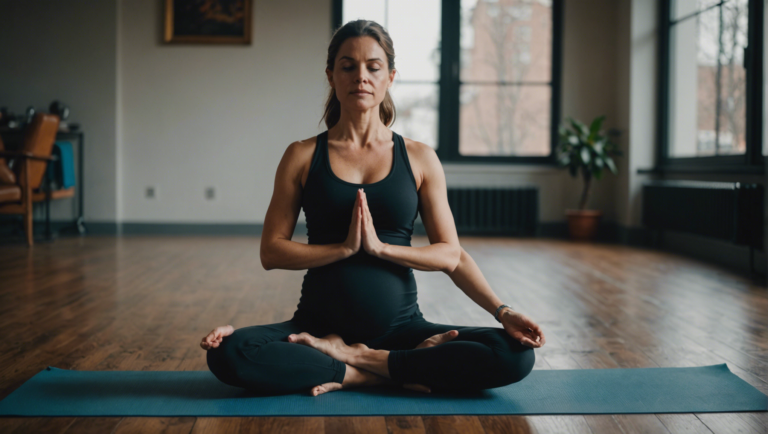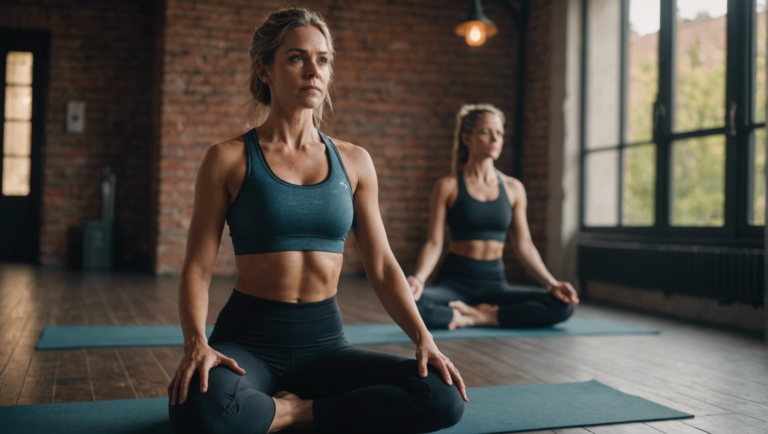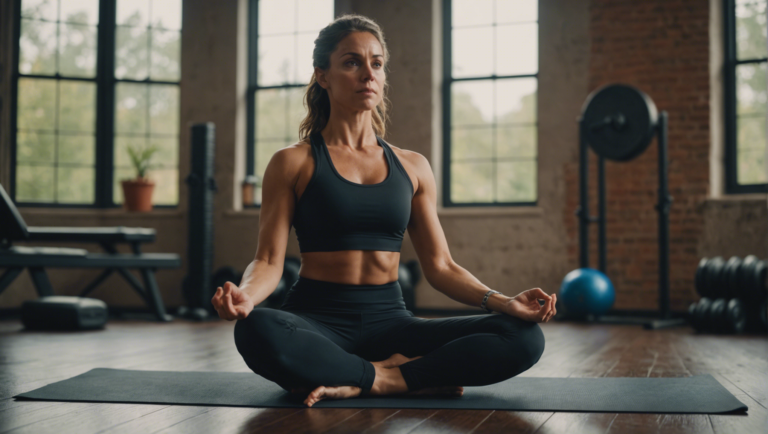Discover Where To Buy The Perfect Yoga Mat
Discover Where to Buy the Perfect Yoga Mat: A Comprehensive Guide
The Quest for the Ideal Yoga Mat: Where to Start Your Journey
Embarking on the quest for the perfect yoga mat is more than a shopping trip—it’s a journey to enhance your yoga practice. Your mat serves as the foundation of your practice, a silent partner in your journey towards wellness and mindfulness. Whether you are a seasoned yogi or just starting, finding the right mat can significantly impact your practice, comfort, and even your motivation.
Understanding Your Yoga Mat Needs
Before diving into the vast market of yoga mats, it’s critical to understand what you need. Not all mats are created equal; they vary in thickness, material, texture, and sustainability. The perfect mat for you depends on your personal practice, preferences, and values.
- Thickness: A thicker mat (about 5mm) offers more cushioning for the joints, ideal for restorative or Yin yoga. A thinner mat (around 1.5mm) provides a firmer grounding, better for balance-focused practices like Vinyasa or Ashtanga.
- Material: PVC mats are durable and offer great grip, but if eco-friendliness is a priority, look towards natural rubber, jute, or organic cotton.
- Texture: The texture dictates your mat’s grip; a smoother mat might be preferable for smoother transitions, whereas a textured mat provides more slip resistance.
- Sustainability: With the rising awareness of environmental issues, many yogis are choosing mats made from sustainable materials that offer the same performance and durability as traditional mats.
Locating Your Perfect Mat: Top Vendors and Retailers
Once you have a clear idea of what you need, where do you find this paragon of yoga mats? Here are several options tailored for different needs:
Dedicated Yoga Stores and Studios
Many specialized yoga retailers offer a wide variety of mats. Shopping here, you benefit from staff with a deep understanding of yoga who can provide personalized advice based on your practice. Additionally, many yoga studios sell mats, and they might allow you to test them during a class, giving you a real feel before making a purchase.
Outdoor and Sports Goods Stores
Big-name outdoor and sports retailers often carry yoga mats alongside other fitness equipment. While the range might be less specialized than in yoga-specific shops, these stores offer high-quality mats that cater to the general fitness enthusiast, often at competitive prices.
Eco-Conscious Online Marketplaces
For those prioritizing sustainability, online marketplaces focused on eco-friendly products are a treasure trove. These sites vet their products for environmental impact, offering mats made from natural rubber, organic cotton, and other sustainable materials, all shipped with minimal packaging.
Direct From Manufacturers
Buying directly from manufacturers online often allows you to get detailed information about the product’s specifications and ethos. Many brands also offer trial periods or satisfaction guarantees, giving you the confidence to invest in their products.
Balancing Quality and Investment
Investing in a high-quality yoga mat is investing in your practice, your comfort, and, importantly, your safety. Good mats offer durability, meaning you won’t have to replace them frequently, making it an eco-friendly choice as well. However, the price range can be vast.
It’s important to balance your budget with your needs. Sometimes, spending a bit more upfront for the right mat can save money in the long run and make your yoga practice more enjoyable and effective. Always check for reviews and possibly try out a mat before committing to it if you can.
Remember, the journey to finding the perfect yoga mat is as individual as your yoga practice. It’s about finding a balance between comfort, performance, sustainability, and aesthetics that best suits you. With the correct information and a clear understanding of your needs, you can make an informed decision that enhances your practice for years to come.
The Evolution of Yoga Mats: Understanding Quality and Materials
The journey of yoga mats from their inception to the varied, technologically advanced designs available today is a fascinating narrative, intimately linked with the evolution of yoga itself from a niche spiritual practice to a global phenomenon. As practitioners seek deeper connections with their practice, the demand for quality, sustainability, and performance in yoga mats has surged, leading to innovations in materials and manufacturing techniques.
Understanding the Shift Towards Quality
In the early years, yoga was often practiced on bare floors, simple cotton mats, or even rugs. However, as the practice gained popularity in the West, the need for a more specialized surface became apparent. The first commercially available yoga mats were simple PVC mats, designed to provide a non-slip surface. While functional, these early mats were far from the perfect solution, lacking in comfort, eco-friendliness, and aesthetic appeal.
Fast forward to today, and the market is flooded with options that cater to every yogi’s needs, from organic, eco-friendly materials to high-tech designs that promise to improve practice. The shift towards quality is not just about the physical product but about what it represents – a commitment to sustainability, health, and the spiritual ethos of yoga.
Eco-Friendly Materials Take Center Stage
One of the most significant shifts in the evolution of yoga mats is the move towards sustainable and eco-friendly materials. Traditional PVC mats, while durable and cheap to produce, are harmful to the environment and often contain toxins that are not aligned with the health-conscious lifestyle of many yogis.
Today, there are mats made from natural rubber, jute, organic cotton, and even recycled materials. These alternatives offer the same, if not better, performance compared to their PVC counterparts, with the added benefit of being biodegradable, non-toxic, and often sourced from renewable resources. This evolution reflects a broader trend in consumer goods towards sustainability and ethical production.
The Role of Technology in Mat Design
Alongside the shift in materials, technology has played a crucial role in the evolution of yoga mats. Manufacturers are continually innovating to improve grip, comfort, and durability. For instance, closed-cell construction prevents moisture and bacteria from penetrating the mat, addressing hygiene concerns. At the same time, advances in texturing techniques have improved grip and tactile feedback, helping practitioners achieve and maintain poses without slipping.
Some mats now come with alignment markers, offering visual cues to help yogis optimize their practice by ensuring proper positioning. This feature is particularly beneficial for beginners or those practicing without the guidance of an instructor.
Performance Meets Aesthetics
As yoga mats have evolved, so too has their aesthetic appeal. No longer confined to the standard purple or blue, yoga mats now come in a myriad of colors, patterns, and designs. This evolution reflects yoga’s transition into a lifestyle choice, with practitioners seeking mats that reflect their personal style and ethos. The vibrant market for yoga mats demonstrates that functionality and aesthetics are not mutually exclusive but complementary.
Choosing the Right Mat
With the plethora of options available, choosing the right yoga mat has become an exercise in understanding one’s needs and values. The perfect mat for an individual is one that aligns with their practice, ethics, and aesthetic preferences. Some might prioritize eco-friendliness and opt for a sustainably sourced natural rubber mat, while others may value technological features like improved grip and alignment guides.
The Future of Yoga Mats
Looking ahead, the evolution of yoga mats is far from over. As the practice of yoga continues to evolve and expand, so too will the tools that support it. Innovations in materials science, sustainable manufacturing, and smart technology promise to continue improving the quality and functionality of yoga mats. The constant is the yogi’s quest for a deeper, more meaningful practice, supported by a mat that reflects their commitment to self-improvement and environmental sustainability.
The evolution of yoga mats is a testament to the dynamic nature of yoga itself. As we continue to explore and expand the boundaries of this ancient practice, the humble yoga mat stands as a symbol of our collective journey towards health, sustainability, and mindfulness.
Essential Features to Look for When Choosing Your Yoga Mat
Embarking on a journey into yoga requires more than just determination and flexibility; it necessitates the right equipment, with the cornerstone being the yoga mat. This essential gear not only defines your personal space in the studio but also supports and cushions your body throughout various poses. To make an informed choice, awareness of certain features is paramount. This exploration into what makes a yoga mat your perfect companion will guide you through the essentials to consider before making your purchase.
Thickness and Comfort
A yoga mat’s thickness is crucial for comfort and support. Generally, mat thickness ranges from a slender 1/16 inch (about 1.5 mm) to a plush 1/4 inch (about 6 mm). A thicker mat provides cushioning for your joints, which is especially beneficial during longer sessions or if you have any pre-existing sensitivity. However, a trade-off exists; thicker mats can make it harder to feel a strong connection to the floor, which is important for stability in many poses. Finding a balance based on personal preference and the types of yoga you practice is key.
Material and Durability
The material of your yoga mat influences its texture, stickiness, eco-friendliness, and lifespan. Most standard mats are made from PVC, known for its durability and stickiness. For those seeking a more earth-friendly option, there are mats crafted from natural rubber, jute, or organic cotton, although these may vary in terms of grip and cushion. When prioritizing durability, consider how the material of a mat withstands repeated use and cleaning, as well as its resistance to wear and tear. A durable mat is an investment in your yoga journey, providing a reliable foundation for years to come.
Grip and Texture
The surface texture of a yoga mat dictates its traction, significantly impacting your practice by preventing slips and aiding alignment. A mat with great grip keeps you secure, even in the sweatiest of sessions, allowing for concentration on form and breathing rather than staying upright. Textures vary from smooth PVC to mats with raised, tactile patterns. While texture preferences are subjective, it’s important to find a balance between a comfortable feel underfoot and effective grip.
Size and Portability
Yoga mats come in various lengths and widths, catering to a wide range of body sizes and preferences. Standard mats typically measure around 68 inches long and 24 inches wide, but taller practitioners may opt for something longer. The width can offer extra space for dynamic movements and poses. When considering portability, think about how often you’ll be transporting your mat. If you travel frequently or commute to a yoga studio, a lightweight mat or one with a carrying strap might be beneficial. Some mats are designed to be ultra-portable, easily folding up to fit into a bag or suitcase.
Eco-Friendliness
As yoga is a practice deeply connected to mindfulness and respect for all living things, the environmental impact of a yoga mat is an important consideration for many. Eco-friendly mats are typically made from natural or recycled materials that are biodegradable or non-toxic. These options offer a sustainable alternative to traditional PVC mats, aligning your practice with environmental values. However, it’s essential to research and possibly trade-off between eco-friendliness and other features such as durability or grip.
Choosing the right yoga mat involves a blend of personal preference, practical considerations, and ethical values. By focusing on the features that matter most to your practice—whether it’s cushion for your joints, a grip that supports your poses, or a material that reflects your environmental concerns—you can find a mat that not only enhances your yoga experience but also accompanies you through every step of your journey. Remember, the perfect yoga mat is one that meets your unique needs, helping you to achieve balance, comfort, and alignment both on and off the mat.
The Impact of Eco-Friendly and Sustainable Yoga Mats on Your Practice
Choosing Eco-Friendly Yoga Mats: A Shift Towards Conscious Practice
In today’s wellness-culture landscape, the surge toward products that promise not just personal health but also planetary well-being has understandably made its way into the yoga community. As practitioners seek to align their physical practice with ethical considerations, the choice of yoga mat emerges as a surprisingly significant decision. The transition to eco-friendly and sustainable yoga mats is not just a trend but a reflection of a deeper understanding of yoga’s foundational principles of mindfulness and respect for all living beings.
The Materials Matter: Beyond PVC
Traditional yoga mats have often been made from polyvinyl chloride (PVC), appreciated for its durability and grip. However, their environmental footprint, both in production and disposal, leaves much to be desired. Enter the era of eco-friendly yoga mats, crafted from a variety of natural materials including organic cotton, natural rubber, jute, and recycled materials. These alternatives not only reduce the toxic load on the planet but also offer a tactile experience that many find enhances their practice.
Not Just a Mat, But a Statement
Choosing an eco-friendly yoga mat goes beyond personal preference and enters the realm of making a statement about one’s values. It reflects an acknowledgment that our practice on the mat impacts the world off the mat. This decision becomes a physical manifestation of the yogic principle of Ahimsa, or non-harm, extending compassion towards the environment. It’s about actively participating in the shift towards sustainability and letting our yoga practice be a space where environmental consciousness can bloom.
The Impact on Practice: A Sensory Experience
The choice of mat can profoundly affect one’s yoga experience. Eco-friendly mats often provide a different grip and texture compared to synthetic alternatives, which can significantly alter the sensory experience of a yoga practice. The natural materials tend to offer a more grounding feeling, enhancing the practitioner’s connection to the earth – a subtle yet poignant reminder of the interconnectedness of all things.
Durability and Care: Myths Debunked
A common misconception about eco-friendly yoga mats is that they lack the durability of their PVC counterparts. However, with proper care, these sustainable options can be just as long-lasting. Most natural mats benefit from simple cleaning routines that avoid harsh chemicals, further reducing their environmental impact. As we shift towards more sustainable practices, it’s important to debunk these myths and recognize the advances in eco-friendly technology that maintain performance without sacrificing ethical considerations.
Finding Your Perfect Eco-Friendly Mat
The journey to finding the perfect eco-friendly yoga mat is highly personal and subjective. It involves considering one’s priorities in terms of grip, thickness, material, and, of course, environmental impact. Many companies now offer extensive information on the sourcing and production of their mats, allowing consumers to make informed decisions that align with their values. This transparency nurtures a deeper connection between the practitioner and their practice, empowering them to choose products that mirror their commitment to both personal and planetary health.
The Ripple Effect: Beyond the Individual
The individual choice of an eco-friendly yoga mat can have a broader impact, encouraging manufacturers to prioritize sustainable practices and inspiring fellow practitioners to consider their own choices. It’s part of a larger shift towards mindful consumption, where each purchase reflects a step towards a more sustainable and compassionate world.
Final Thoughts
In essence, the movement towards eco-friendly and sustainable yoga mats reflects a broader shift in how we approach our yoga practice – as an intertwined web of personal health, environmental sustainability, and ethical living. This choice becomes a profound form of activism, harmonizing our physical practice with the values of mindfulness, respect, and interconnectedness that yoga teaches. As we roll out our mats, we’re not just preparing for a session of asanas; we’re making a statement about the kind of world we wish to create and sustain.
Tips for Maintaining and Cleaning Your Yoga Mat for Longevity
Yoga mats serve as the foundation of a fulfilling yoga practice, providing not only comfort but also safety and stability. To ensure your yoga mat remains a supportive partner in your journey towards well-being, regular maintenance and proper cleaning are essential. This not only enhances its longevity but also maintains the hygiene and overall quality of your practice. Investing time in the care of your mat translates to a more enjoyable and effective yoga experience. Let’s delve into the key steps for keeping your yoga mat in prime condition.
Understanding Your Yoga Mat’s Material
Before diving into cleaning techniques, it’s crucial to recognize that yoga mats come in various materials, each requiring specific care methods. Common materials include PVC, rubber, TPE (thermoplastic elastomer), and natural materials such as cotton or jute. PVC mats often offer the most durability and are easiest to clean, while natural material mats may need more gentle care to maintain their integrity and prevent damage.
Daily Care Tips to Keep Your Mat Fresh
Regular upkeep can significantly extend the life of your yoga mat. After each practice, take a moment to wipe down your mat with a microfiber cloth. This removes oils, sweat, and dirt, preventing them from embedding into the material. For those who practice frequently, this simple step is vital in preventing the build-up of bacteria and odors.
Deep Cleaning Methods for a Pristine Mat
Every few weeks, or more often if you practice intensely, your mat will benefit from a deeper clean. You can create a gentle cleaning solution by mixing water with mild soap or a specialized mat cleaner. Use a soft cloth to scrub the mat lightly, focusing on areas that seem particularly soiled. Avoid using harsh chemicals or scrubbing too vigorously, as this can degrade the mat’s surface and affect its grip.
Drying Your Mat Properly Post-Cleaning
After washing, rinse your mat thoroughly to remove any soap residue, as this can create a slippery surface. Allow your mat to air dry, laying it flat or hanging it in a well-ventilated area out of direct sunlight. Sun exposure can fade some mats and cause the material to deteriorate over time. Ensure the mat is completely dry before rolling it up to prevent mold and mildew growth.
Storing Your Mat to Avoid Damage
Proper storage is as crucial as the cleaning process itself. Avoid folding your mat, as this can create permanent creases and weaken the material. Instead, roll your mat loosely and store it in a cool, dry place. If possible, use a yoga mat bag for extra protection and to prevent exposure to dust and dirt.
Addressing Stains and Odors
For mats that have developed odors or stubborn stains, consider using a mixture of vinegar and water as a deeper cleaning solution. Vinegar has natural disinfectant properties, making it effective in eliminating odors and mildew. However, always perform a spot test on a small area of your mat to ensure the solution does not damage the material.
The Role of Professional Cleaners
If your yoga mat requires more intensive cleaning or has specific issues such as deep-set stains or persistent odors, professional cleaning services can offer a solution. These services use methods and products that are safe for yoga mats, ensuring thorough cleaning without compromising the mat’s quality. However, always check reviews and confirm the cleaners’ experience with yoga mats before proceeding.
Regular maintenance and occasional deep cleaning play a fundamental role in extending the life of your yoga mat, ensuring it remains a vibrant part of your practice. By adopting these steps, you can maintain the cleanliness, grip, and overall quality of your mat, contributing to a more focused, enjoyable, and hygienic yoga experience. Remember, a well-cared-for yoga mat not only supports your practice physically but also reflects the respect and dedication you bring to your yoga journey.
Conclusion
Embarking on the journey to find the ideal yoga mat can significantly elevate your practice, affecting not just the physical comfort but also the spiritual and environmental harmony you achieve. This comprehensive guide has taken you through various aspects critical to making an informed decision, from the historical evolution and understanding of the materials and quality that distinguish superior yoga mats, to identifying the features that best suit your personal practice needs.
Your familiarity with the components and the evolution of yoga mats equips you with the framework for discerning among the array of options available in the market. You’ve gained insights into why the thickness, material, texture, and durability of a yoga mat can impact your comfort and stability, informing a more targeted search for that perfect mat.
Moreover, the article underscored the importance of considering eco-friendly and sustainable options, reflecting a growing consciousness within the yoga community towards preserving our environment. The choice of a yoga mat goes beyond personal preference, touching upon the broader responsibility we hold towards the planet. By opting for mats made from sustainable resources and adhering to eco-conscious manufacturing practices, you not only contribute to the health of the earth but also align your practice with yoga’s foundational principles of non-harm.
In addition, the guide has offered practical advice on maintaining and cleaning your yoga mat, ensuring its longevity. These tips serve as a reminder that a yoga mat is not just a purchase but an investment in your yoga journey. Proper care can greatly extend the life of your mat, allowing it to support your practice for years to come, and fostering a deeper connection with the tool that grounds and supports you in each session.
Selecting the right yoga mat, understanding its makeup, and learning how to care for it, echoes the mindfulness and intentionality at the heart of yoga itself. This process encourages you to reflect on what you truly need from your yoga practice, and how your choices, even as seemingly simple as selecting a mat, reflect and affect your values and the world around you.
Retailers around the globe, from specialized yoga stores to general sports goods retailers and online marketplaces, offer a diverse spectrum of yoga mats. Armed with the knowledge from this guide, you can navigate these options with confidence, discerning which mat aligns with your personal yoga journey, ethical values, and environmental concerns. Remember, the best place to purchase a yoga mat is where you find a product that resonates with your needs, values, and aspirations.
Engaging with the yoga community, either in person or through online forums and social media, can further inform your choice, offering insights and recommendations based on a wealth of collective experiences. Fellow practitioners can provide invaluable advice on the performance and durability of their mats across different styles and intensities of yoga.
This guide was created to empower you with comprehensive knowledge and practical tips, ensuring you feel well-informed and confident in your quest for the perfect yoga mat. The intention is to make your search a mindful and meaningful part of your yoga journey. Here’s to finding a yoga mat that not only meets your physical, ethical, and environmental criteria but also becomes a cherished partner in your ongoing exploration of yoga. Let your chosen mat ground you in your practice, support your poses, and reflect your commitment to yoga’s profound and life-enhancing principles.



